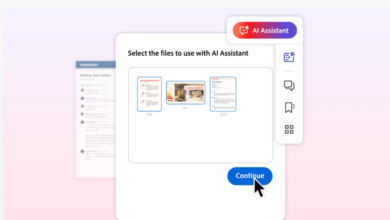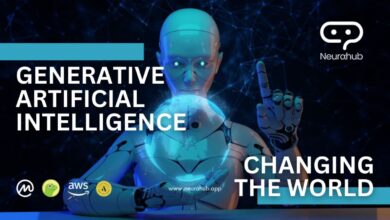Is Gen AI Ready for the Enterprise? Separating the Hype from the Business Value

However, while everyone agrees the technology is a game-changer for business, the question being asked more and more in the boardroom is whether AI is truly ‘enterprise-grade’.
Business AI is not new
While hype about AI has reached unprecedented levels, the technology itself is not entirely new.
Nick Bostrom, in his book “Superintelligence”*, first published over ten years ago, provides an excellent summary of the progression of AI technology. This contemporary work captures the stages of AI – the inflated expectations; the plateauing; and the breakthroughs.
Enterprises have long relied on machine learning to power advanced analytics and predictive capabilities in a broad range of use cases – from manufacturing to finance operations to procurement and supply chain. These algorithms have equipped business leaders with information to drive greater operational efficiency.
AI has also been used extensively in traditional forms of algorithms, for example search engines, which defined an entire era of our technological development and transformed entire sectors, most notably the advertising industry.
Mounting issues with AI’s enterprise readiness
But what works on the web does not necessarily work in business. The Internet doesn’t care about authorisations. The C-suite does.
As concerns over privacy and data protection mount – especially in light of ongoing regulatory pressures – many companies have implemented restrictions over the use of open GenAI tools.
This is for good reason. Imagine an employee shares financial statements, vendor contracts or salary information with a GenAI tool that then reuses that information in answering prompts from other users.
A GenAI tool without an authorisation element is simply not enterprise-grade, and probably doomed to be confined to a single use case or department, limiting its ability to deliver value to the broader business.
Security issues also arise with the concept of data lakes, which combine enterprise and external data sources for AI purposes. Data lakes can be treacherous to enterprises, especially when data must be exported outside of large enterprise applications.
Here, a federated approach that leaves enterprise data at their origin and does not copy or transfer data is needed. Critically, organisations must maintain the semantic layer of the data, which can be the Achilles heel of every data lake project and, consequently, the GenAI models trained on that data.
Beware of hallucinations
However, the greatest danger in AI that is not enterprise-grade lies in its tendency to hallucinate.
Gen AI is an excellent algorithm that fundamentally learns by looking at what is available within its domain, usually the internet. Let’s be honest – you can’t trust every piece of information found on the internet anymore.
In an enterprise environment, CEOs are seeking the ‘single version of truth’. That means fact checking is important but begs the question: “which is the dataset on which I should train my Gen AI?”. The simple truth is that business leaders cannot build products or develop innovations using models that make things up or use insights based off false or inaccurate information.
Here, application suite vendors have the upper hand. The business applications that power the world’s enterprises have a wealth of business data that can be mined by AI algorithms to produce accurate, relevant, and reliable insights. Vendors in this space also have significant expertise in business processes and contextualised data – the perfect sources for training effective GenAI.
There’s no doubt that enterprises will benefit from the power of AI in the coming years. Whether it is enterprise-ready comes down to individual systems and tools. While some already have enterprise-level capabilities, others may not yet meet all the requirements for reliability and security. Business leaders must take care to build out AI use cases that can deliver value to the business, rely on robust datasets, and live up to expectations. These guardrails will ensure business AI solutions that are relevant, reliable, and responsible.
*Superintelligence – Paths, Dangers, Strategies was written by author, Nick Bostrom, and first published in 2013 by Oxford University Press



